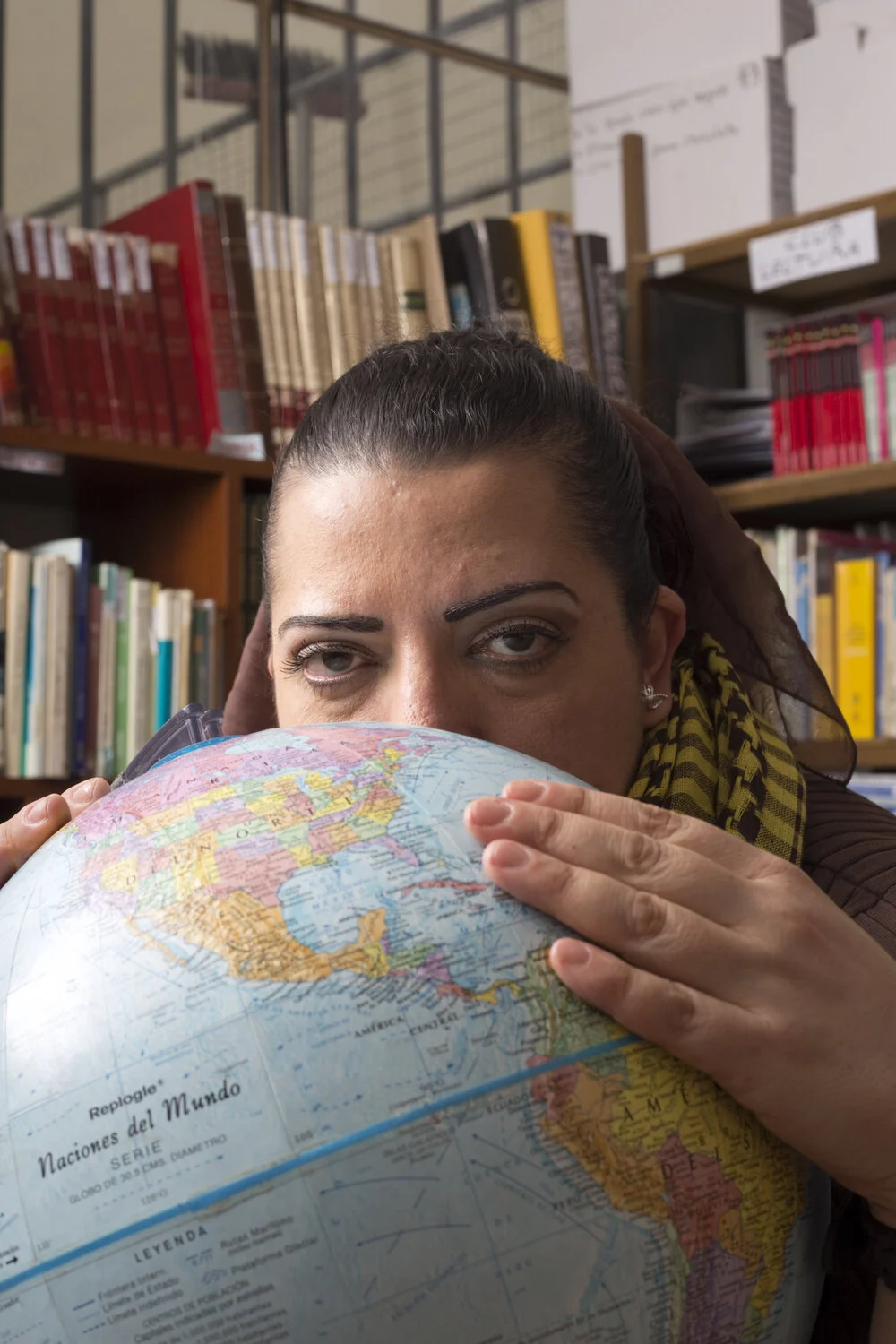Historias de Mujeres Privadas de la LIbertad (Stories of Imprisoned Woman)
Picture taken after the shooting of the documentary.
Being free is an idea we barely think about. This thought came to my mind in 2013 when I was producing a documentary about education for woman in jail. My presumptions told me I was going to meet the most dangerous people because the idea of a criminal goes straight to the bucket of evil. And of course we love to categorize between black and white. But after the first day, everything changed. My perspective changed and I was able to empathize with the person instead of the idea of a criminal. Their stories were powerful not because of why these woman ended up in jail, but because of an uncontrollable desire to share and verbalize their inner worlds. The production I was in charge was not enough and that was really frustrating.
The living conditions for women in any correctional facilities and prisons have always represented a complex challenge because of the different levels of material, psychological and/or emotional elements that have to play together. Even though the Ecuadorian government has made improvements to prisons with its policies, laws, and facilities, there is always the requirement to provide psychological support that most of the times stays in the surface of simple and standard official programs. People in jail need channels for enhanced self-expression as part of the rehabilitation process because it teaches them alternative ways to relate with their emotions.
Each participant received a set of hight quality art material to be used in the Art Class.
Luckily, as an International Exchange Alumni I had the change to make this desire of sharing stories possible, that year I won a fund to design an Educational Program in Art, Design and Literature for Woman in Jail. Sixteen women learned how to write basic fiction, foundation of visual communication and several fine art techniques. Historias de Mujeres Privadas de la Libertad (Stories of Imprisoned Woman) was a legitimate free space where they could tell to world what was trapped in their hearts.
The context was complex and deserved the best tools available. For this reason I partnered up with the Art Department (COCOA) of my college Universidad San Francisco de Quito. Cristian Mogrovejo and Christine Klein, who were my teachers, became my partners. The 3 of us created an adapted academic syllabus with two classes per week that included communication tools from the fields of art, design and literature. For the art class, we provided high quality material for each participant from traditional markers and color pencils to sophisticated sets of graphite, ink and watercolor. Every week they learned a different technic that was used to tell a story through image.
My son by Mary Pai
This exercise was an exploration of empathy. They had to explore what were their interests and put them self in the middle of a net. They repeat the exercise putting the name of someone they judged or were curious to lear more from.
What I want to leave in the world by Andrea Gaibor
Ink Illustrations
The literature component included basic ways to build stories. We talked about philosophy, fiction, poems, and prose. Even though, the class had people with almost zero education to college students the focus was never about proper grammar or academic writing. The participants already had a language in use. They needed to use it in the way they wanted, with the words they used and understood because those are meaningful in their lives.
Portrait publication: Alejandra by Wendy Ribadeneira
Canek and the Magic Rings by Alejandra G
Besides the syllabus we created, we included a workshop about self-knowledge. This extra workshop was facilitated the Anthropologist Rodrigo Muñoz Contreras and Sociologist Teresa Carbonell. They talked about meditation, mindfulness, and emotional healing. With this extra workshop, the process covered an entire loop, starting with the reflection about themselves, identification of personal narratives and the inclusion of elements to make this experience tangible though the use of words and images.
For the final project, they wrote a short story, testimonial or fiction piece, and illustrated it. Currently, we are working on publishing their work. We are sure we contributed on these women’s lives. Art, design and literature have been always the tools to let people hear our ideas. We, as designers, believe that design has an important role and sense of social responsibility. The sense of creating meaningful interventions is the mission of the designer, always thinking about people as the most important foundation. This is real human centered design.
La Mujer que Dormía (The sleeping woman) by Andrea G.
El Niño Triste (The Sad Boy) by Elizabeth S.
For more pictures and stories visit MUVA Studio by Rodrigo Muñoz on Facebook.











